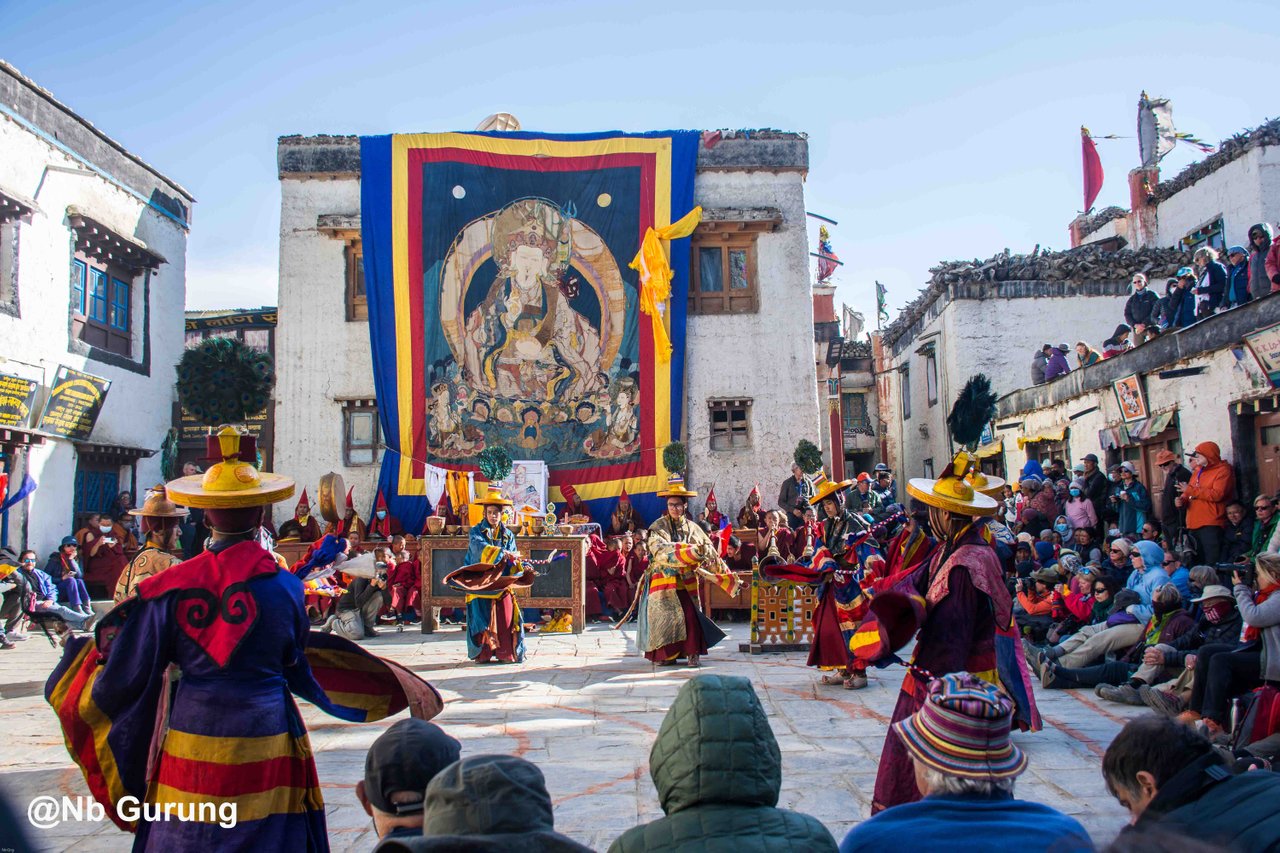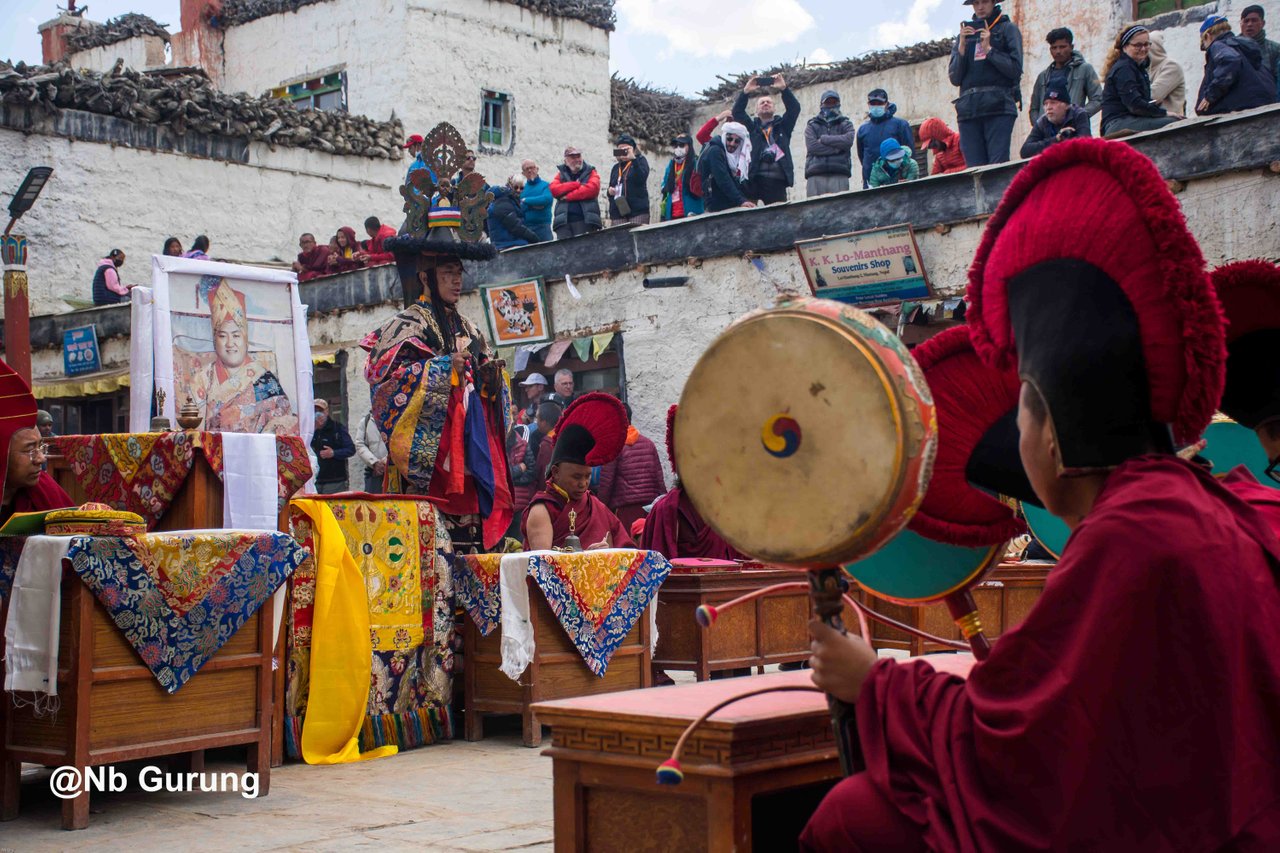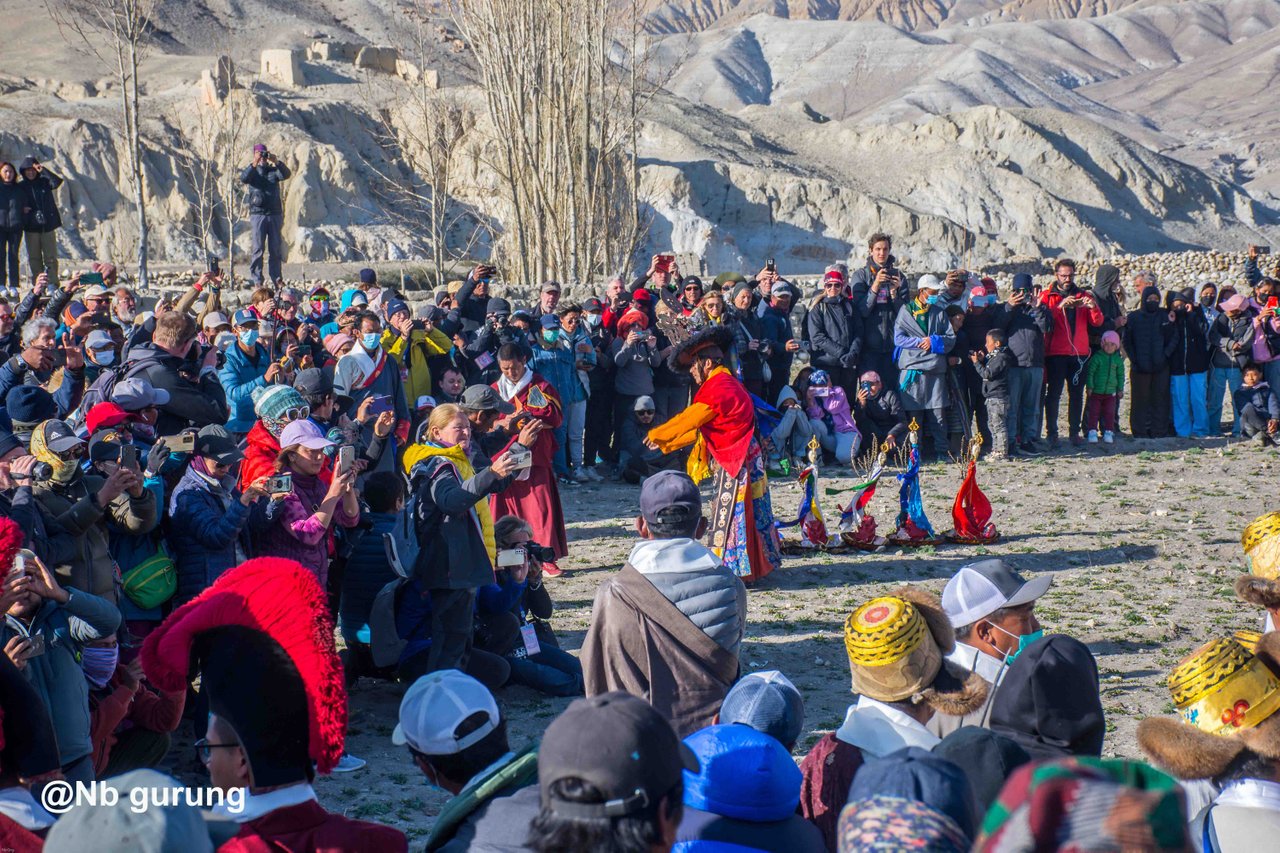Experience the Tiji Festival in Upper Mustang
0 comments
The Mustang Tiji Festival Trek is an incredibly daring adventure that immerses you in lively customs and culture. This three-day celebration has preserved the ancient Mustang culture in Lomanthang for decades. Additionally, this represents both defending the area and defeating evil spirits. Being observed shortly before harvest time, it will represent the improvement of a bountiful crop and sound judgment for high output.

There will be three distinct dancing performances by the monks on three separate days. Day One commences in the Royal Palace courtyard and concludes in an open space following the closing ceremony. It is possible to see both locals and visitors appreciating the grandeur of this event during the Tiji Festival Trek. Doing the Mustang Tiji Festival Trek makes sense for a number of reasons.
Explore and observe the nature and culture of Mustang
Mustang is a secluded area of north-central Nepal that is home to remarkable natural scenery, antiquated customs, and a distinct cultural legacy. Mustang is a high-altitude desert with windswept plateaus, steep gorges, and bleak cliffs that is located in the rain shadow of the Himalayas. The charming settlements, old cave houses built into the steep cliffs, and monasteries perched on cliffsides contrast with the dramatic scenery.
The bright festivals, prayer flags waving in the breeze, and temples all attest to Mustang’s strong Tibetan Buddhist influence. For millennia, the Lo-Ba people of Mustang have maintained their customs and way of life, depending on yak herding, trade, and agriculture to survive in this hostile terrain. Their rich cultural legacy that has been passed down through the years is shown in their vibrant clothing, exquisite handicrafts, and gracious hospitality.
Discovering Mustang provides an opportunity to step back in time to a moment when the untamed splendour of the Himalayas appears to stop time. Walking through its isolated valleys, meeting wandering herders, and taking in the ages-old cave paintings leave one spellbound by this magical land’s enduring charm. With its breathtaking natural beauty and diverse cultural heritage, Mustang genuinely captures the spirit of adventure, spirituality, and cultural discovery. It cordially invites visitors to experience these elements for themselves.
Explore the ancient monasteries
Mustang is home to an intricate web of historic monasteries, all of which are rich in spirituality and history and provide insight into the region’s ingrained Buddhist customs. Lo Gekar Gompa is one of the oldest monasteries in Nepal and is thought to have been established in the eighth century by the Buddhist guru Padmasambhava. Travelers find it to be a marvel and a Buddhist pilgrimage place because of its magnificent wood carvings, old murals, and holy relics.
Three well-known monasteries in Lomanthang, the capital of Upper Mustang, draw tourists because of their striking architectural designs and deep spiritual significance. These include the 15th-century Jampa Gompa, Thubchen Gompa, and Chode Gompa, which are all decorated with elaborate mandalas, colorful murals, and statues.
In the village of Tsarang, to the south, is Tsarang Gompa, which has remarkable Tibetan architecture and is home to a number of Buddhist texts and relics. A tranquil haven for contemplation and meditation, Chhoser Gompa is situated close to Chhoser hamlet, amidst the craggy rocks.

Other noteworthy monasteries in Mustang are Luri Gompa, which is well-known for its ancient cave paintings that date back more than a thousand years, and Kancholing Gompa, which is well-known for its expansive views of the surrounding mountains. Together, these monasteries preserve the essence of Buddhism in Mustang’s ethereal landscapes while acting as cultural icons and spiritual havens.
Understanding the Tibetan Buddhism in Nepal.
In Mustang, Nepal, Tibetan Buddhism is very important and has shaped the people, customs, and way of life in the area. Mustang’s Buddhist customs are very similar to those of Tibetan communities, a result of its near closeness to Tibet.
Everyday life in Mustang is influenced by key components of Tibetan Buddhism, including the concepts of rebirth, karma, and the pursuit of enlightenment. Monasteries are hubs for spiritual education and serve as places for community meetings where laypeople and monks alike engage in rituals, prayers, and meditation.
Ancient monasteries, vibrant festivals, and hallowed pilgrimage sites all bear witness to the region’s rich religious past. Tibetan Buddhism in Mustang is a live example of the region’s continuing spiritual legacy, from the historic caverns of Lo Gekar Gompa to the elaborate murals of Lomanthang’s monasteries.
Upper Mustang in Nepal is a captivating destination reminiscent of the Tibetan Plateau
Nepal’s Upper Mustang is a fascinating place with a high-altitude desert scenery and a distinctive cultural legacy that is evocative of the Tibetan Plateau. This isolated area, tucked away in the Himalayan rain shadow, provides travelers with a window into a different age with its historic monasteries, traditional Tibetan architecture, and nomadic way of life. Hiking in Upper Mustang is like traveling to a foreign planet, with its arid cliffs, windswept plateaus, and deep gorges creating an eerie yet alluring atmosphere. The area is a must-visit for anyone looking for an adventure off the main route because of its rich Buddhist tradition, colorful festivals, and friendly people.
Nepal’s Upper Mustang is well known for its colorful native celebrations
Nepal’s Upper Mustang is well known for its colorful native celebrations; two particularly noteworthy ones are the Yartung and Tiji festivals. The communities of Lo Manthang and Yara celebrate Yartung, also called the “Horse Festival,” with great enthusiasm. Typically taking place in August, this event showcases the rich cultural legacy of the area with traditional horse racing, dance, singing, and other activities.

Upper Mustang’s festival calendar also has the three-day Tiji Festival, which is known as the “Chasing of the Demons.” Held in Lo Manthang in May, this age-old Tibetan Buddhist celebration features a colorful presentation of mask dances, ceremonies, and prayers meant to ward off evil and guarantee the community’s prosperity.
These celebrations are a must-see feature of Upper Mustang, providing guests with an unparalleled chance to observe authentic Tibetan Buddhist culture up close.
A completely unique travel experience may be had in Upper Mustang, Nepal, which is known for its breathtaking scenery, friendly locals, and rich cultural history. The untamed, high-altitude desert terrain, which is evocative of the Tibetan Plateau, offers an exciting setting for discovery and action. With their deeply ingrained Tibetan Buddhist customs, the residents of Upper Mustang provide an insight into a way of life that hasn’t altered much over the years. Upper Mustang is a place that captivates the senses and makes a mark on everyone who visits, from vibrant festivals and historic monasteries to stunning trekking routes.
Comments